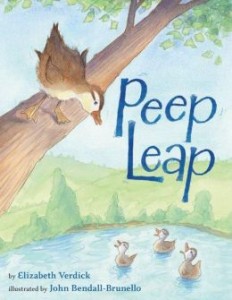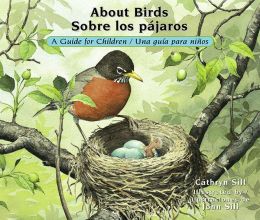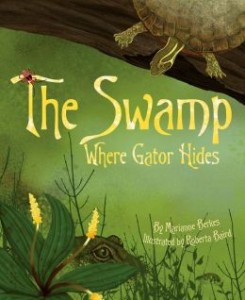Written by Elizabeth Verdick
Illustrated by John Bendall-Brunello
Buy on Amazon
A delightful, adorable counting book for preschoolers, Peep Leap is the adventure of ten newly-hatched wood ducks taking the plunge from their nest in a tree to the ground far, far below. When all ten eggs have hatched, the Mama wood duck glides from the nest in the hollow of the tree to the ground below and begins to call for the baby ducks. One by one, the ducklings join her in the water below, until only one duckling is left in the nest.
Afraid to take that first “step,” the duckling hesitates. Mama duck gently encourages the baby, until, hooray, number ten duckling finally leaps! And then the family of ducklings, Mama duck, and Daddy drake duck swim ‘round and ‘round in the pond.
Peep Leap teaches the early math skill of counting from one to ten, counting backwards from ten to one, and numeral recognition. The illustrations are large and vibrant – just what a preschooler needs to enjoy the words of the story.
Parents will enjoy reading this sing-song, rhyming picture book to an older toddler or preschooler again and again. The rhythm is soothing, and one can just picture a small child tucked in the lap of mom or dad, listening intently to the story just before bedtime. Adults will also enjoy the lessons of courage and bravery, as well as the positive outcome resulting from the parent’s gentle encouragement of the slightly-less-than-brave duckling. And, parents or preschool teachers will want to use this book as an introduction to nonfiction literature. An explanation of the nesting and fledging of wood ducks is included on the very last page of the book.
Though this book would be best read aloud to a preschooler, late first grade students should be able to read the book with very little help and would most likely enjoy reading to a younger sibling or to a younger student in a peer-mentoring relationship.
Use this National Geographic site to look at photographs of other kinds of duck mamas and babies and other animals. http://animals.nationalgeographic.com/animals/photos/national-geographic-mallard-ducks/#/mallard-duck-family-retreat_35053_600x450.jpg
As follow-up, preschool activities, choose various items of different tactile materials in collections of ten to practice counting.
You might also try this fun game: use yellow cotton balls if available and play the game on a tabletop. Tape a circular piece of blue paper on one end of the table with masking tape. Place more than ten cotton balls on the other end of the table. Have the preschooler blow gently on the cotton balls until only ten are in the “pond.” He or she will need to stop often to count the number of cotton balls on the blue paper pond.
 TITLE: Peep Leap
TITLE: Peep Leap- AUTHOR: Elizabeth Verdick
- ILLUSTRATOR: John Bendall-Brunello
- PUBLISHER: Amazon Children’s Publishing, 2013
- REVIEWER: Julie Lavender
- EDITION: Hard Cover, 32 pages
- ISBN: 978-1477816400
- GENRE: Picture Book
- LEXILE: 410







